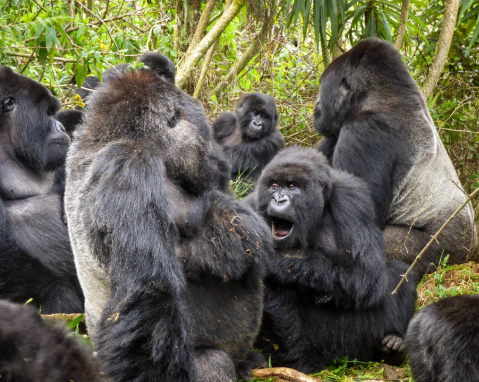The Role of the Silverback in Gorilla Groups
Gorillas are fascinating creatures, and the dynamics of their social structures are equally intriguing. At the heart of these complex groups is the silverback—a male gorilla that plays a crucial role in maintaining the group’s well-being. Understanding the silverback’s responsibilities not only enriches our knowledge of gorillas but also emphasizes the importance of conservation efforts for these magnificent animals.
The Leadership Role of the Silverback
Silverbacks are the dominant males in gorilla groups, and their leadership is vital for the stability of the troop. These males are typically the strongest and most experienced, often guiding the group in foraging, maintaining order, and protecting against threats. A silverback’s authority helps reduce conflicts within the group, as his presence is a calming influence, allowing for smoother interactions among the members. When a silverback feels confident, the group feels secure, enabling them to thrive in their natural habitat.
Protection and Defense
One of the most significant responsibilities of a silverback is the protection of his group from predators and rival gorillas. Armed with immense strength and powerful vocalizations, the silverback will display aggressive behaviors, such as charging and chest-beating, to deter intruders. His courage in defending the group is essential, as it not only guards against physical threats but also fosters a sense of safety that allows younger gorillas and females to focus on nurturing and socializing. When a silverback is absent, the group may be vulnerable to attacks, making the silverback’s protective role indispensable.
Building Social Bonds
A silverback also plays a crucial role in fostering social bonds within the group. He engages in grooming behaviors with both females and young gorillas, which help strengthen relationships and promote a sense of unity. This bonding is essential for the social structure, as it reduces stress and increases cooperation among group members. Through these interactions, the silverback establishes trust and loyalty, ensuring that the troop remains cohesive. In this way, the silverback acts not only as a leader and protector but also as a nurturer, facilitating social harmony in the group.
In conclusion, the silverback gorilla is much more than just a formidable creature; he is the cornerstone of his group’s social dynamics. Understanding the roles they play can help us appreciate the delicate balance of life in the wild and the need for conservation efforts to protect these incredible animals. If you’re eager to learn more about gorillas and their habitat, consider visiting a wildlife sanctuary or supporting conservation initiatives. Every little effort counts in preserving these magnificent beings for future generations.

